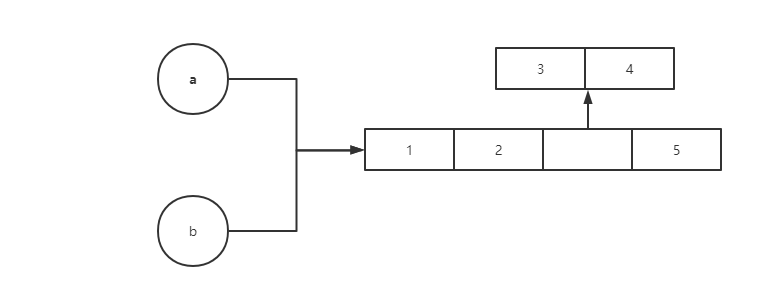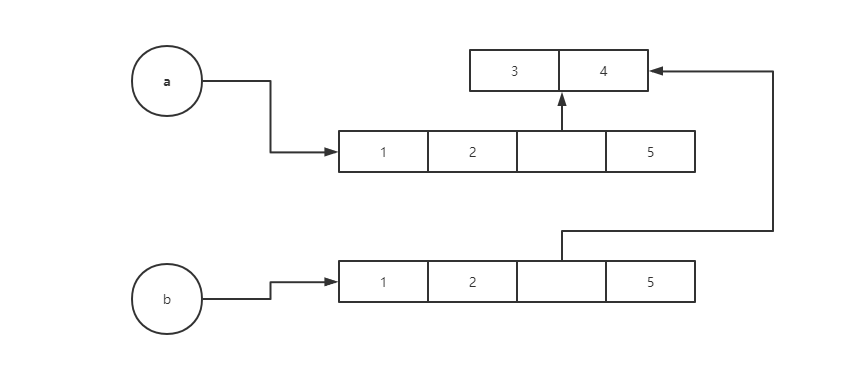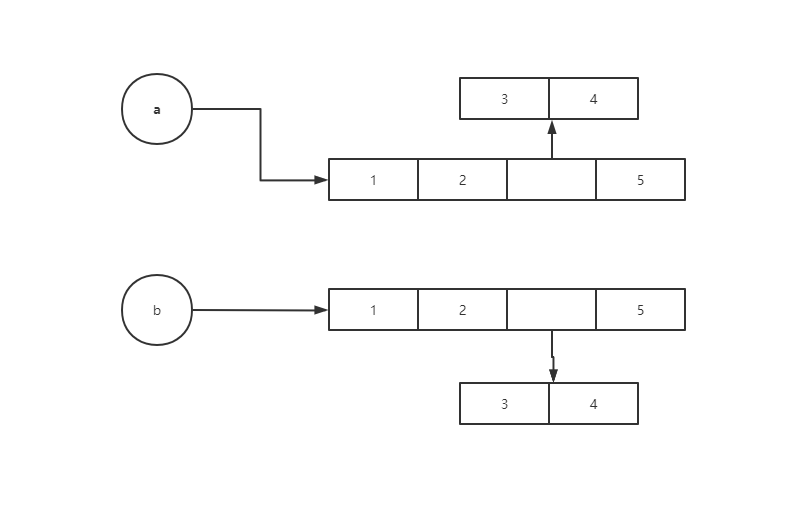1.2.2. 列表list[]¶
List可以使用 [] 或是 list() 來创建空的,或是直接加入值进去,使用逗号区分即可。內容可以重复出现,且具有順序性:
empty_list = []
weekdays = ['Monday', 'Tuesday', 'Wednesday', 'Thursday', 'Friday']
big_birds = ['emu', 'ostrich', 'cassowary']
使用 list() 来作为转换其他类型到List:
print(list('cat')) # ['c', 'a', 't']
a_tuple = ('ready', 'fire', 'aim')
print(list(a_tuple)) # ['ready', 'fire', 'aim']
提取內容時跟字符串一样使用[ ], index 从0开始,-1为最后一个:
XD = ['a', 'b', 'c', 'd']
print(XD[0]) # a
print(XD[1]) # b
print(XD[-1]) # d
print(XD[-2]) # c
XD[0] = 'QQ'
print(XD[0:2]) # ['QQ', 'b']
print(XD[2:-2]) # []
print(XD[::2]) # ['QQ', 'c']
备注
List里面可以包含不同类型的Object,当然也包括List
可以使用List的內建函数append()来向后面添加元素:
语法 |
效果 |
|---|---|
list.extend()或 += |
合并list |
list.insert() |
在指定位置插入元素,若位置超过最大长度則放在最后面。 |
del Object |
用来刪除某个位置的元素,剩余元素会自动往前填补 |
list.remove() |
用来移除指定元素 |
list.pop() |
类似剪出的效果,可以將指定位置的元素剪出來,默认index为 -1 |
list.index(x[, start[, end]]) |
找查指定元素第一次出现的index |
in Object |
判断指定元素是否存在 |
list.count(obj) |
计算指定元素出現次数 |
实例1:
XD = ['a', 'b']
XD2 = ['e', 'f']
XD.append('QQ~') # ['a', 'b', 'QQ~']
XD.extend(XD2) # ['a', 'b', 'QQ~', 'e', 'f']
XD += XD2 # ['a', 'b', 'QQ~', 'e', 'f', 'e', 'f']
XD.append(XD2) # ['a', 'b', 'QQ~', 'e', 'f', 'e', 'f', ['e', 'f']]
XD.insert(2, 'c') # ['a', 'b', 'c', 'QQ~', 'e', 'f', 'e', 'f', ['e', 'f']]
XD.insert(500, 'ker') # ['a', 'b', 'c', 'QQ~', 'e', 'f', 'e', 'f', ['e', 'f'], 'ker']
del XD[8] # ['a', 'b', 'c', 'QQ~', 'e', 'f', 'e', 'f', 'ker']
XD.remove('e') # ['a', 'b', 'c', 'QQ~', 'f', 'e', 'f', 'ker']
QQ = XD.pop(3) # ['a', 'b', 'c', 'f', 'e', 'f', 'ker'] QQ~
print(XD.index('f')) # 3
print('ker' in XD) # True
print(XD.count('f')) # 2
实例2:
print(', '.join(['a', 'b', 'c'])) # a, b, c
print(', '.join('abc')) # a, b, c
print(', '.join(('a', 'b', 'c'))) # a, b, c
print('a, b, c'.split(', ')) # ['a', 'b', 'c']
shoplist.sort() #自排序
列表综合:
listone = [2, 3, 4]
listtwo = [2*i for i in listone if i > 2]
print listtwo
//結果
[6, 8]
列表list:
shoplist = ['apple', 'mango', 'carrot', 'banana'] #列表
print '一共', len(shoplist), '个列表' #打印列表个数
for item in shoplist: #打印列表中的各值
print item
shoplist.sort() #自排序
del shoplist[0] #从列表中删除一条
序列:
shoplist = ['apple', 'mango', 'carrot', 'banana']
print('Item 0 is', shoplist[0]) #'apple'
print('Item -2 is', shoplist[-2]) #'carrot'
print('Item 1 to 3 is', shoplist[1:3]) #['mango', 'carrot']
print('Item 0 to 3 is', shoplist[:3]) #['apple', 'mango', 'carrot']
print('Item 1 to last is', shoplist[1:]) #['mango', 'carrot', 'banana']
name = 'swaroop'
print('characters 1 to 3 is', name[1:3]) #'wa'
切片¶
通用写法:
start : stop : step
实例:
1. 格式: "start :"
week = ['Monday', 'Tuesday', 'Wednesday', 'Thursday', 'Friday']
print(week[3:]) # ['Thursday', 'Friday']
print(week[-3:]) # ['Wednesday', 'Thursday', 'Friday']
2. 格式: ": stop"
print(week[:3]) # ['Monday', 'Tuesday', 'Wednesday']
print(week[:-3]) # ['Monday', 'Tuesday']
3. 格式: "start : stop"
print(week[1:3]) # ['Tuesday', 'Wednesday']
print(week[-3:-1]) # ['Wednesday', 'Thursday']
4. 格式: "start : stop : step"
5. 格式: " : "
复制列表中的所有元素(浅拷贝)
浅拷贝与深拷贝¶
python 的三种赋值方式:
直接赋值(传址)
浅拷贝(copy)
深拷贝(deepcopy)

直接赋值(传址)¶
直接赋值(传址):
shoplist = ['apple', 'mango', 'carrot', 'banana']
mylist = shoplist #此乃引用
备注
使用 ‘=’ 设定变量则会是传址,等同于前面說的标签概念,把两张标签贴在同一个物件上(number or srting 除外) 这样当我改变Object后,则Object上所有的标签所指到的值都会跟着改变, 若要改成赋值的话可以使用copy() 、 list.list() 与 list[:] 来达到目的
备注
浅拷贝,拷贝的是父对象,不会拷贝到内部的子对象。

浅拷贝¶
浅拷贝:
方式1:
c = a.copy()
方式2:
e = a[:]
方式3:
d = list(a)
浅拷贝vs直接赋值实例:
1. 不修改内部子对象时,浅copy不会被修改
list1 = [123, 456, 789, 213]
list2 = list1
list3 = list1[:]
print(list2) # [123, 456, 789, 213]
print(list3) # [123, 456, 789, 213]
list1.sort()
print(list2) # [123, 213, 456, 789]
print(list3) # [123, 456, 789, 213]
2. 修改内部子对象时,浅copy也会被修改
list1 = [[123, 456], [789, 213]]
list2 = list1
list3 = list1[:]
print(list2) # [[123, 456], [789, 213]]
print(list3) # [[123, 456], [789, 213]]
list1[0][0] = 111
print(list2) # [[111, 456], [789, 213]]
print(list3) # [[111, 456], [789, 213]]

深拷贝¶
深拷贝vs浅拷贝实例:
import copy
a=[1,2,[3,4],5]
b=copy.deepcopy(a) # 深拷贝
c=a[:] # 浅拷贝
print(b) # 结果为 [1,2,[3,4],5]
# 1. 更改a的数据(浅拷贝和深拷贝都不变)
a.append(6)
print(a) # [1,2,[3,4],5,6]
print(b) # [1,2,[3,4],5]
print(c) # [1,2,[3,4],5]
# 2. 子对象数据(深层数据)的更改(浅拷贝变, 深拷贝不变)
a[2].append(7)
print(a) # [1,2,[3,4,7],5,6]
print(b) # [1,2,[3,4],5]
print(c) # [1,2,[3,4,7],5]





